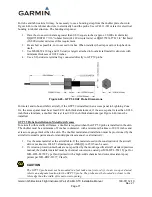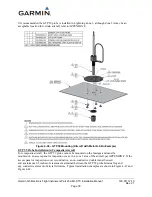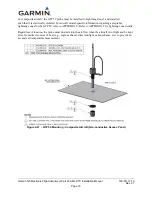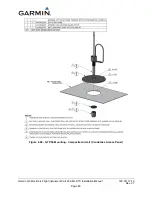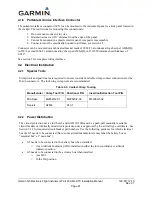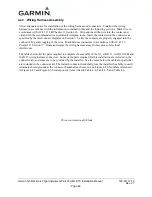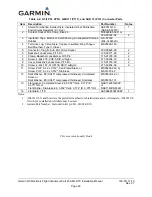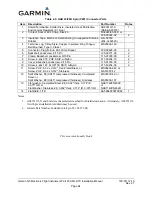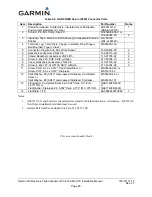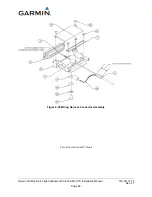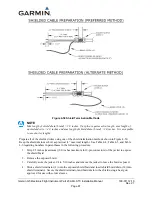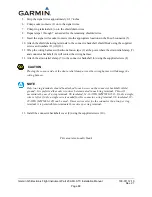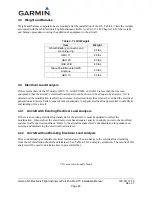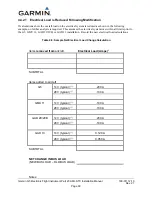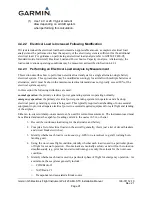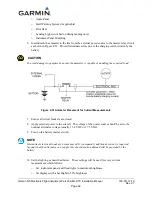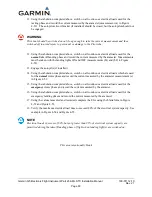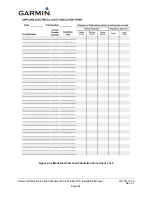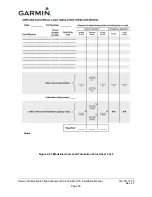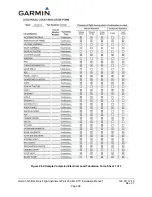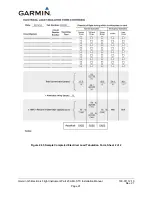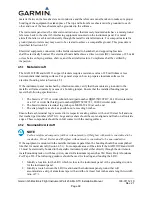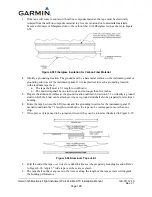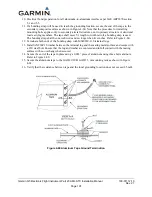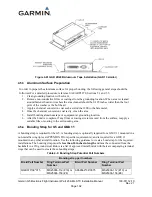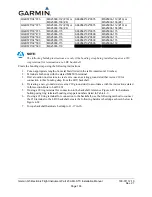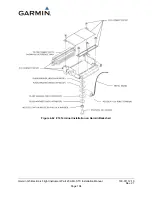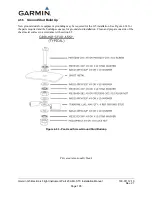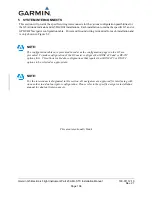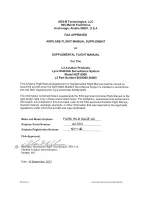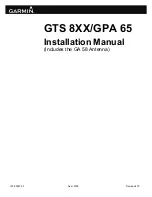
Garmin G5 Electronic Flight Instrument Part 23 AML STC Installation Manual
190-01112-10
Rev. 21
Page 91
(1) Use 14 V or 28 V typical current
draw depending on aircraft system
when performing this calculation.
4.4.2.2 Electrical Load is Increased Following Modification
If it is determined the electrical load has increased an appreciable amount, a complete electrical load
analysis must be performed to show the capacity of the electrical system is sufficient for the additional
electrical load. For guidance on performing an electrical load analysis, refer to ASTM F 2490-05,
Standard Guide for Aircraft Electrical Load and Power Source Capacity Analysis. Alternatively, the
loads under various operating conditions may be measured, as described in Section 4.4.2.3.
4.4.2.3 Performing an Electrical Load Analysis by Measurement
This section describes how to perform an electrical load analysis for a single alternator-single battery
electrical system. These procedures may be modified accordingly for aircraft with multiple batteries or
alternators, and it must be shown the maximum electrical demand does not typically exceed 80% of the
electrical system capacity.
In this section the following definitions are used:
normal operation
: the primary electrical power generating system is operating normally.
emergency operation
: the primary electrical power generating system is inoperative and a back-up
electrical power generating system is being used. This typically requires load shedding of non-essential
equipment to provide adequate electrical power to essential required equipment for safe flight and landing
of the airplane.
Either an in-circuit or clamp-on ammeter can be used for current measurement. The instrument used must
be calibrated and must be capable of reading current to the nearest 0.5 A, or better.
1.
Record the continuous load rating for the alternator and battery.
2.
Compile a list of electrical loads on the aircraft (generally, this is just a list of circuit breakers
and circuit breaker switches).
3.
Identify whether each load is
continuous
(e.g. GPS) or
intermittent
(e.g. stall warning horn,
landing gear).
4.
Using the worst-case flight condition, identify whether each load is used in a particular phase
of flight for
normal
operation. If some loads are mutually exclusive and will not be turned on
simultaneously (e.g. pitot heat and air conditioning), use only those loads for the worst-case
condition.
5.
Identify whether each load is used in a particular phase of flight for emergency operation. As
a minimum, these systems generally include:
o
COM Radio #1
o
NAV Radio #1
o
Transponder and associated altitude source

